Last updated on May 18th, 2023
Vultures are massive predatory birds that lack feathers on their heads and necks. Depending on where you are in the world, you may also know them as condors or buzzards, but these all describe the same scavenging bird. Despite their reputation, vultures are actually vital to the health of the ecosystem. Aside from the general knowledge that vultures eat dead animals, how much do you really know about these fascinating creatures?
50 Interesting facts about Vultures
1. Throughout the world, there are 23 different species of vultures. At least one type of vulture lives on every continent in the entire world, with the exception of Antarctica and Australia.
2. A new belief is that vultures were once present in Australia. This new way of thinking began after bones that were discovered long ago were determined to be from a vulture family rather than those of an eagle. Still, after going extinct on the continent, vultures were never able to make a comeback.
3. Vultures are social birds. They typically travel, eat, and congregate in flocks. These flocks maintain a strict social order, which is determined based on the strength of the bill and the overall body size of each vulture.
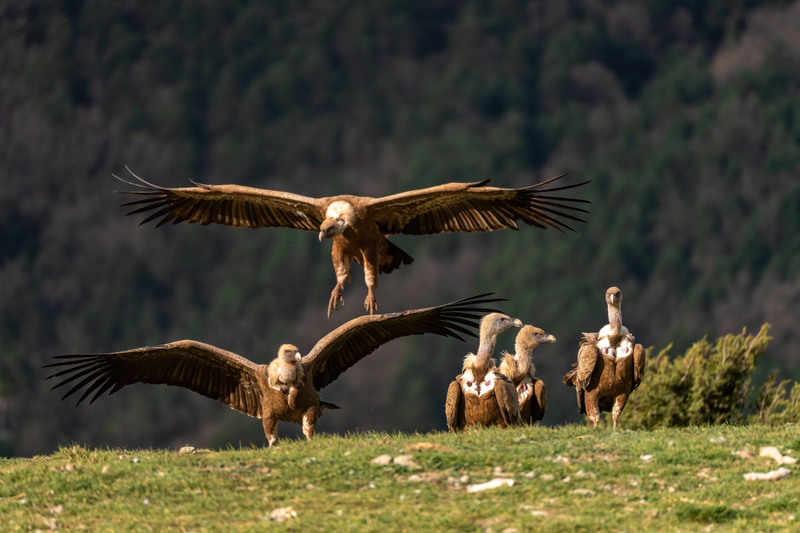
4. A group of vultures may be referred to as a venue, committee, or volt. While they are in flight, a group of vultures is called a kettle. When they are eating, the group is known as a wake.
5. Vultures do not have a syrinx, which is also known as a voice box. Because of this, they cannot sing like most other birds.
6. They are not entirely silent, however. What little noises they do make sounds like grunts, raspy hisses, or snarls.
7. They have an incredible sense of smell and even better sight, both of which helps them find food. They can detect a dead animal that is over a mile away.
8. Due to their sharp senses, vultures patrol over rather large territories. They spend the majority of their days flying around in search of food for their next meal.
9. Their size equips them with powerful wings for flying and soaring. To accomplish this, they utilize columns of air as it rises, called air thermals. These allow them to soar comfortably or push themselves ever higher.
10. The notion that vultures fly in circles over dying animals is actually a myth. Vultures have no way of sensing or otherwise knowing when an animal is dying.
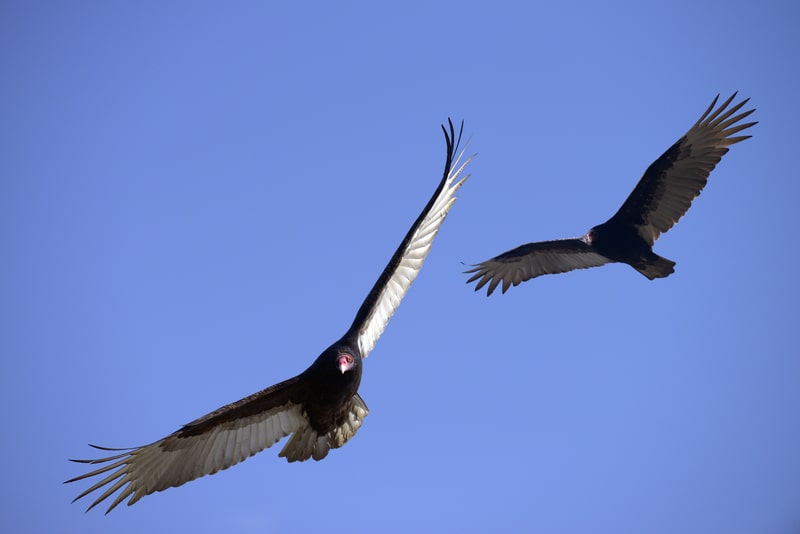
11. When they are seen flying in circles, they are doing so because they are utilizing airflow to rise higher into the sky.
12. Vultures are carnivores whose diets consist almost entirely of dead animals. While their preference leans more toward fresh meat, they can eat meat that is so rotten that it would be deadly for any other animal to consume.
13. It is not just the rotten meat — vultures will also eat the bones of an animal that would otherwise be left lying around because no other animal could or would eat it. In fact, bones comprise between 70 and 90 percent of vultures’ diets.
14. Their stomach acid is much stronger than the acid found in the stomachs of any other birds or animals. It is also considerably more corrosive. The presence of such stomach acid is the reason that vultures can eat rotten meat that is chock full of otherwise dangerous bacteria. The acid kills off any bacteria so that the vulture remains unharmed.
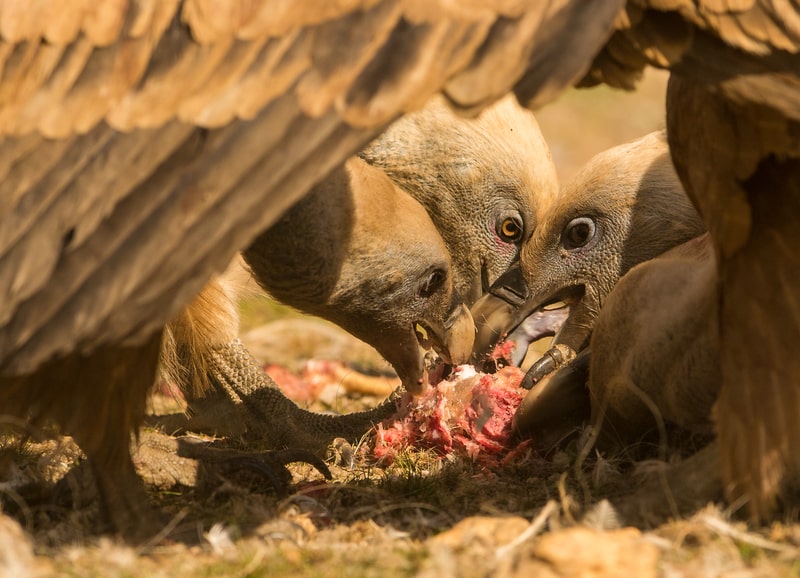
15. Unsurprisingly, this ability is the reason why vultures play such a crucial role in the circle of life — they aid in the prevention of diseases that would otherwise spread from rotten carcasses to living animals, including cholera, botulism, and rabies.
16. Their legs and feet are actually not that strong, so they cannot carry prey to another location to devour it. In order to feed their babies, vultures will stuff themselves with meat from a dead animal nearby. When they get back to their nests, the vultures will then regurgitate it for their babies.
17. Despite their reputation for eating what is already dead, they can and will attack prey. This is especially true if they have not been able to find much food nearby.
18. When they do go after living prey, a vulture will never pick a fight with a large or healthy animal. Instead, it tends to go after prey that is slower and easier, such as those that are very sick, injured, or otherwise weak, like babies and elderly animals.
19. Their talons are not very sharp and are fairly useless, but their bills are super powerful.
20. If the dead animal they go to eat is too stiff for their blunt talons to pierce through, vultures will patiently wait for another animal to come by and get the flesh open before they go in to eat. This is the reason that vultures are often seen alongside other animals as they feed, including eagles, coyotes, wolves, and hyenas.
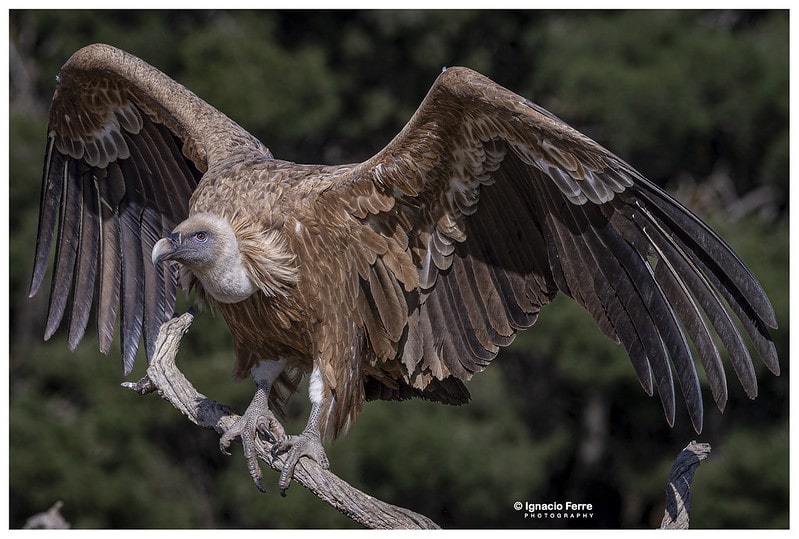
21. When they do find a dead animal, whether it is because they saw it, smelled it, or heard other animals feeding off of it, they are quick to arrive on the scene in hopes of beating any more animals to the meal.
22. However, once they arrive, vultures quickly fall into their social order. The larger vultures get first dibs while smaller vultures must wait their turn. All vultures fall back to allow room for any other predator, from hyenas to jackals to eagles.
23. In a single sitting, vultures will eat up to 20 percent of their own body weight. They will pick the bones completely clean before eating them, too.
24. When they get hot, vultures will urinate and defecate on their own legs and feet in an attempt to cool off. This process is called urohydrosis.
25. Not only does urohydrosis help to cool them down, but the process also kills off any parasites and bacteria that got on them while they were sitting on dead animals during their previous meals.
26. There is some debate as to why vultures have no feathers on their heads and necks. The common belief is that they lack feathers because when feeding on dead animals, their heads get covered in blood. This is particularly the case when they stick their heads completely inside an animal carcass, as they have been known to do. The lack of feathers makes it easier for them to get cleaned off afterward. The other belief is that they lack feathers because it makes it easier for them to cool down.
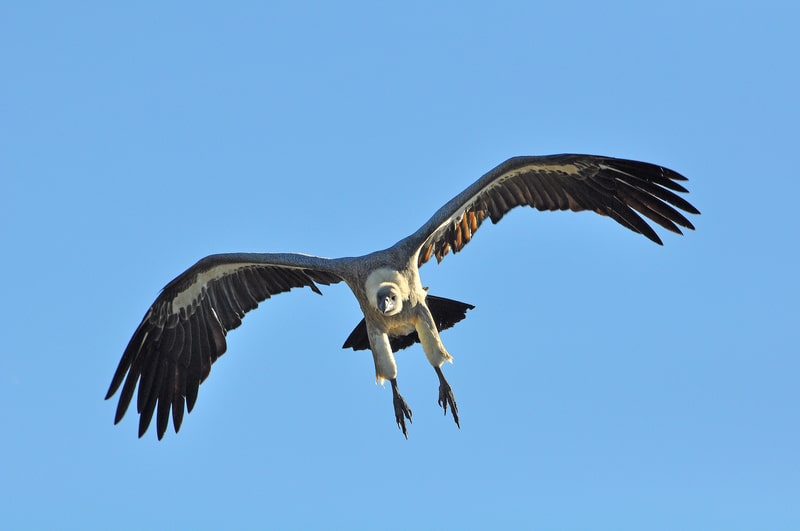
27. Although vultures have very few predators, they will throw up when they feel threatened. However, this is not because they are nervous. Instead, they vomit to distract or deter predators from coming after them as well as to reduce their body weight and are therefore able to fly away faster and easier.
28. Vultures will sit with their wings open from time to time, which may come off as being pretty intimidating. On the contrary, the birds do this to warm their wings or to dry off after flying through rain or waking up on a dewy morning. According to the Missouri Department of Conservation, the pose even has a name — it is known as the horaltic pose.
29. Some vultures are not only intelligent, but they are crafty, too. They have been seen dropping eggs onto rocks in order to break them open, and some have even been spotted hammering away at eggs using stones.
30. Vultures have a lifespan that can go on for decades, although this varies by species. They typically live about 25 years. Interestingly, the oldest known vulture lived to be 79 years old.
31. Most vultures find one mate and remain loyal for their entire lives. It is also notable that these pairs stick together all year round.
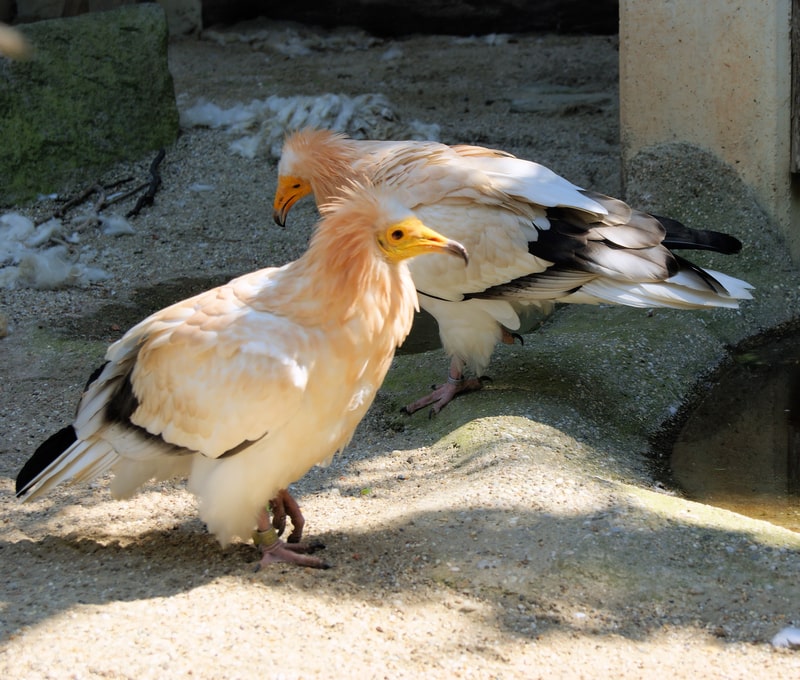
32. When it comes time to lay an egg, some vultures use various sticks, leaves, and fresh foliage, and choose a good spot high up in a tree. If it is built strong enough, the nest may be reused for several years to come.
33. Most other vultures forego a nest and simply lay eggs in any spot that seems good enough, including in caves, thickets, abandoned buildings, or on cliffs. If the location turns out to be successful and no predators find the egg, then the vulture will reuse the spot the next time it breeds.
34. Most vultures produce a single chick at a time, though they may lay up to three eggs. The male and female vulture take turns sitting on the nest and allowing the other partner to go out and find food.
35. Baby vultures are called fledglings.
36. Eggs hatch after a period that lasts between 28 and 41 days.
37. After they hatch, the babies are typically blind and utterly defenseless, aside from the ability to make a quiet hiss.
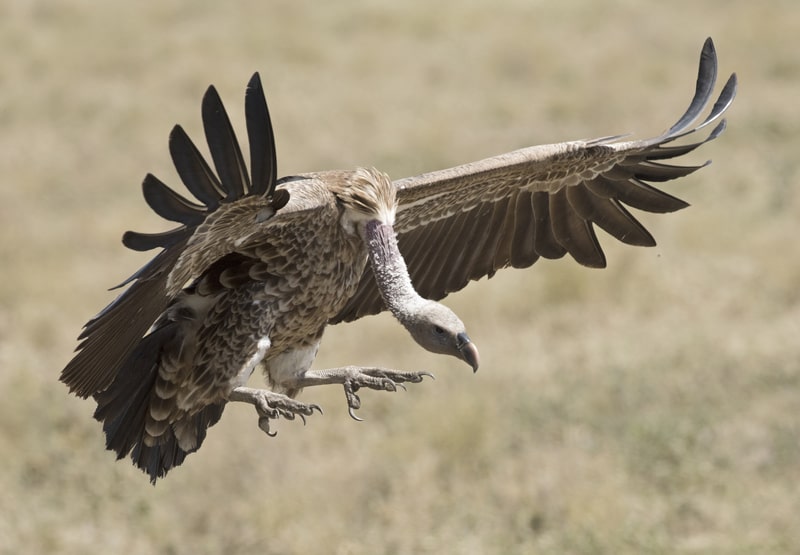
38. It takes about 90 days for baby vultures to be able to fly successfully. However, they continue to be nurtured by both parents for up to eight months.
39. Typically, vultures only breed every other year. This occurrence may play a minor role in their overall population decline.
40. Some vultures lack the wall of cartilage and bone, called the nasal septum, in their bills. When seen from the side, you can actually see straight through their bills.
. . . continue reading facts about vultures on the next page
